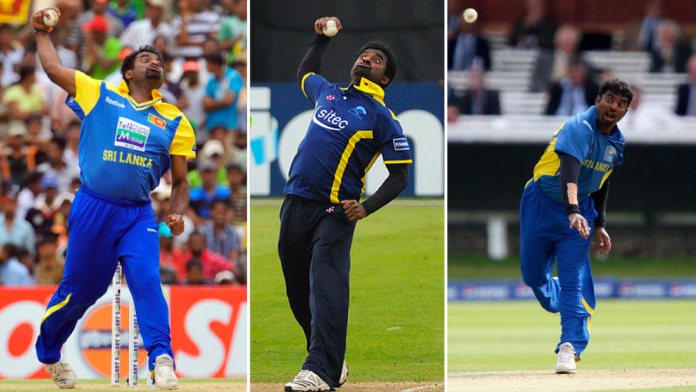Every sport is governed by a set of rules to make the game fair, and so is our favorite sport, Cricket. One of the strict rules in international cricket governs the bowling actions to prevent the players from chucking. Chucking in cricket is an illegal action that accounts for an illegitimate delivery. Here’s all that you should know about what is chucking and its illegality in cricket.
What is Chucking?
Chucking is most commonly known as throwing a ball, which happens when the bowler straightens his arm while throwing the ball. The action is considered illegal, and the ball is deemed to be illegitimate. The rule against chucking relates to bending the arm at the elbow. The extent of bending the arm has recently been codified by the ICC, which permits flexing the elbow to a maximum of 15 degrees.
If a bowler is found to be chucking a ball, the umpire declares it as a no-ball and calls the player for a suspected action of throwing. As per the law, the rotation of the shoulder is required while bowling to provide velocity to a ball. Therefore, bowlers playing in international cricket should only straighten the elbow joint to the extent of 15 degrees while delivering the ball. The law set by the ICC applies at the point where the bowling arm passes above shoulder height and releases the ball. The 15-degree limit considers the natural flexing of the elbow, which happens during a legal delivery.
Also Read: 15 Best Cricketers of All Time
The Illegality of Chucking
Chucking is considered illegal in cricket as it gives an unfair advantage to the bowler. When a bowler straightens the arm while delivering the ball, he gets an unfair advantage related to the ball’s pace and turns. The advantage of chucking is more prevalent amongst spinners than fast bowlers as they can generate additional revolutions on the ball resulting in an additional spin.
The charge of chucking or throwing is serious and controversial in cricket. If a player is suspected of chucking, he cannot effectively participate in the game. Usually, the umpire uses his cricket experience and the naked eye to identify if a player has used an illegal action of chucking. If the bowler is suspected of chucking even after one warning, he is immediately suspended, and the umpire submits a report to the match referee after the match ends. The player is then tested at an ICC accredited testing center. The test assesses the player’s bowling action and measures the elbow’s bend during the bowler’s action. The bowler then has to modify his bowling action and undertake another test before he is allowed to participate in a game. A player may be banned from bowling if he is unable to change the action.
Also Read: Most Dangerous Teams in IPL
Generally, the off-spinners are more likely to be called for throwing during a front-on approach as their elbow gets in front of their wrist while releasing the ball. However, there also have been a few exceptions to this rule of chucking. For instance, Shoaib Akhtar of Pakistan and RP Singh of India have an abnormal condition of hyperextension, which means that their arm also gets extended in a backward direction. Due to this, they were often reported for this illegal action. After review by ICC, the rule is applicable for an extension in the forward direction only.
The procedure followed for suspected Chucking:
- The umpire first calls out a ‘No Ball’ and informs another umpire of the reason for such a call.
- Primarily, it is the duty of the striker-side umpire to assess the fairness of the bowling action and call out a No Ball. However, the umpire at the bowler’s end can also call out a No Ball.
- After a No Ball has been called out for a suspect action, the umpire at the bowler’s end gives the bowler the first and final warning. He then informs the bowling side captain of the reason and also the batsmen about the occurrence.
- A bowler warned about chucking can continue to bowl as long as he is not called out again for the illegal bowling action in the same innings.
- If the umpires suspect the illegal bowling action again, they can call out a No Ball. The player is then suspended immediately for the innings. The umpires also inform the two batsmen and bowling side captain about the occurrence.
- Another bowler completes that over but is not allowed to bowl in the following over.
- After the match, both the umpires submit a report to the match referee and inform the ICC and cricket boards of the illegal bowling action. Appropriate action is taken against the bowler, the captain, or even the team.
Conclusion
Whether or not chucking will be legalized in the future is a bone of contention. The rules seem to be stacked against bowlers, and many believe that with the addition of rules such as Free-Hit, Super-Sub, and Powerplay, even bowlers should be given some advantage. For instance, if chucking is legalized for one or two deliveries per over, it may add more color to the game. Moreover, fast bowlers and spinners can gain extra speed, and spin which may work in their favor, and they can change the game when performing under pressure.
Meanwhile, you can certainly make your matches more colorful and interesting by playing fantasy league on the Rummy Bo app. Just download the app, select an upcoming match, and form your fantasy team with the best players. Be mindful of the bowlers you select to avoid chucking instances!




